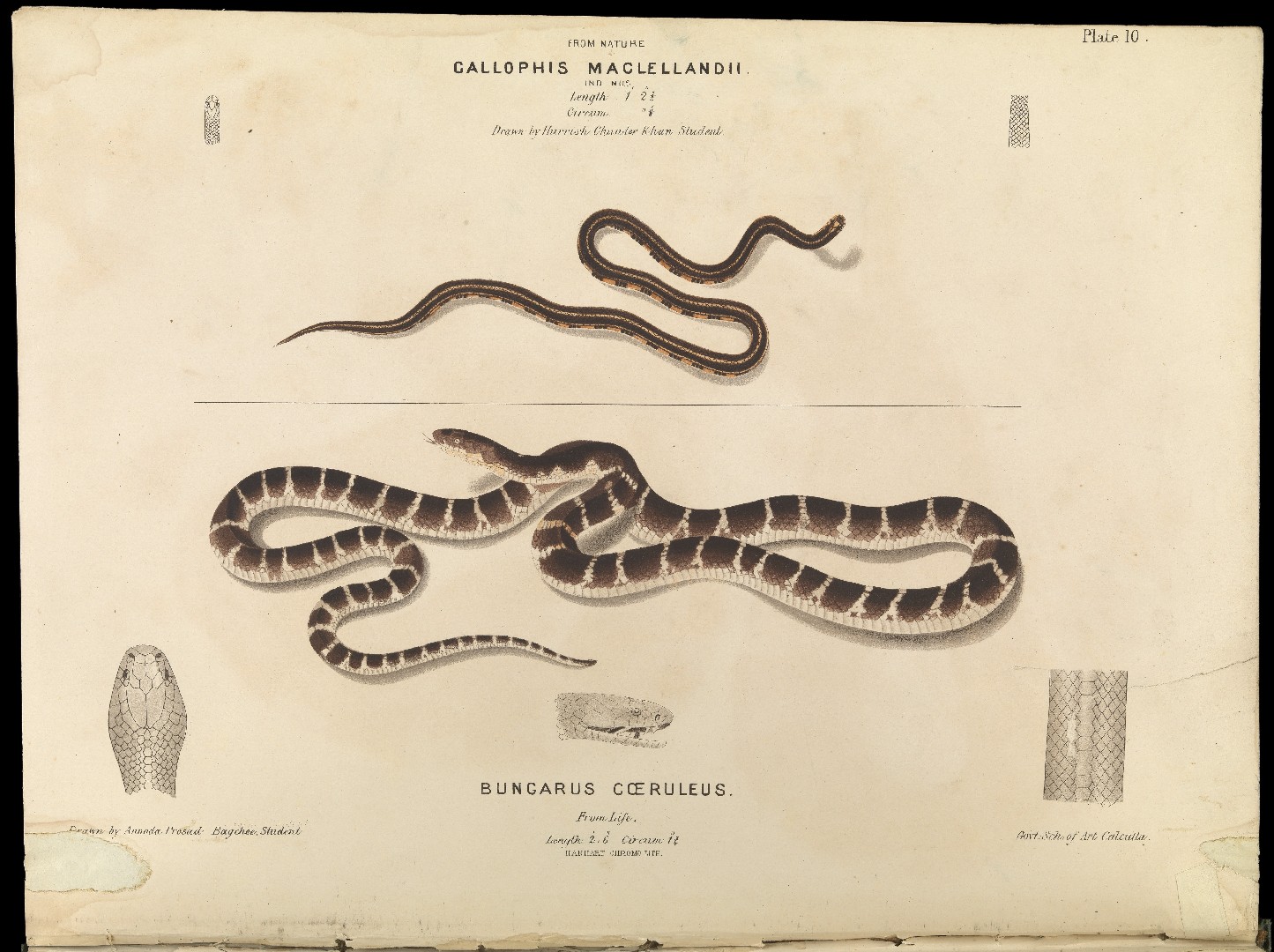Indian krait
A species of Kraits Scientific name : Bungarus caeruleus Genus : Kraits
Indian krait, A species of Kraits
Scientific name: Bungarus caeruleus
Genus: Kraits
Content
Description General Info
 , used under CC-BY-4.0 /Cropped and compressed from original
, used under CC-BY-4.0 /Cropped and compressed from original Description
The common krait (Bungarus caeruleus), also known as Indian krait or blue krait) is a species of venomous snake of the genus Bungarus found in the jungles of the Indian subcontinent. It is a member of the "big four" species, inflicting the most snakebites on humans in India.
General Info
Lifespan
12-20 years
Diet
Indian krait mainly feeds on the lifeforms that comprise the herpetofauna, especially smaller snakes and lizards. Its venom paralyzes the prey, allowing easy ingestion even of larger snakes.
Appearance
Indian krait is a streamlined, medium-sized snake with smooth, glossy scales. Its most distinguishing feature is its beautiful bright blue skin, often accompanied by thin, white crossbars. It has a short, pointed tail and a rounded head barely distinct from the neck. Both males and females share the same vibrant color, with no discernible size difference between the sexes.
Behavior
Indian krait demonstrates a nocturnal and solitary nature, primarily hunting amphibians. Its defensive posture includes lifting a portion of its body off the ground, forming a loop and making a hissing sound. Indian krait is venomous, employing its neurotoxic venom swiftly in encounters. No particular nest or territorial marking behavior has been observed.
Population
Stable
Scientific Classification
Phylum
Chordates Class
Reptiles Order
Lizards and snakes Family
Elapids Genus
Kraits Species
Indian krait